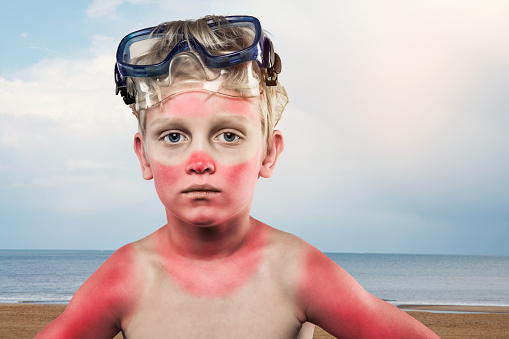How to Prevent and Treat Sunburns

Here in Vancouver, Spring was a long time coming! We had so much rain that the first few warm days encouraged everyone outside and exposed to the wonderful sunshine. This exposure increases our vitamin D status which improves mood and our immune system. However, sun burns are common particularly when too much time is spent catching rays before our skin has a chance to build up the necessary base layer. Shorter intervals of sun are recommended until the melanin in your skin has a chance to build up that protective layer.
So what exactly is a sunburn? Our skin protects us from our environment which includes the sun’s UVA/UVB radiation exposure; a sunburn is a thermal burn from this radiation. A first degree burn is most common but deeper more serious burns can occur.
There are three classifications of burns:
- First Degree Burn: epidermis or top layer of skin, specific area becomes red, swollen, painful for 2-3 days
- Second Degree Burn: deeper layer of skin, a blister will also form usually within the first 24 hours, do not pop this blister to help prevent against infection
- Third Degree Burn: deepest and most serious, area becomes blacken or dark and can be filled with blood – this requires medical attention.
My top 5 recommendations for treating sunburns include:
- Keep hydrated.
When dealing with any degree of burn, ensure you stay hydrated and electrolytes are replaced. This can include using sea salt water, coconut water, or electrolytes drinks (preferably without dyes and too much sugar). - Cool off.
Place the affected area in cool, still water. Never place the affected area in running water as this may increase the risk of further irritation to the tissue. - Apply fresh, 100% aloe vera gel.
This helps to draw heat out of the burn while soothing the pain and reducing risk of infection. Do not apply oils or creams until heat and pain have subsided as this can increase heat trapped in the skin and exacerbate the pain. For first degree burns, a herbal compress with calendula and chamomile can also provide pain relief and enhance healing. - Support your immune system.
It is also a good idea to support your immune system while you are healing from a sunburn, with good quality proteins, increased veggies, and extra vitamin C and essential fatty acids. - Know when to seek medical attention.
See your qualified healthcare provider:
- If total area covers an area the size of both hands (especially in young children or elderly)
- If symptoms of shock are starting to develop such as: cool, clammy, pale skin, rapid pulse rate and breathing, nausea or vomiting, weakness, dizziness, or fatigue
- If there is any sign that an infection may be starting: fever, illness, pus, swollen lymph nodes.
Don’t forget to monitor for heat stroke as this can occasionally accompany a sunburn or can develop in absence of a burn, and requires medical attention. Read more about the symptoms of heat stroke in my other post on this topic.
The best way to protect yourself this summer from a burn is to cover up, seek shade, and consider frequent applications of a natural sunscreen containing titanium dioxide or zinc oxide even on overcast days.
For tips to improve overall health and wellbeing, nutrition, recipes and meal plans, visit this page.
Previous Post
Next Post
Sleep is so important but the optimal amount is different for each family member.
It depends on age and other factors.
Find out the healthy sleep ranges by age, for you and your growing family.
Starting with babies (newborn to one year),
toddlers, preschoolers, school aged
children, teens and adults.
Guide to optimal family sleep (daytime naps & at night)
FREE download
Be the first to know about special
offers and resources
for our community only.
Don't miss out!
Become a Calm Parent Insider
FREE gifts & resources
CALMMOTHER LIMITED © 2023 | ALL RIGHTS RESERVED
terms | privacy | contact
Simplifying life for parents so you can focus on what matters most to you.
Live your best life with kids!
+ Show / Hide Comments
Share to: